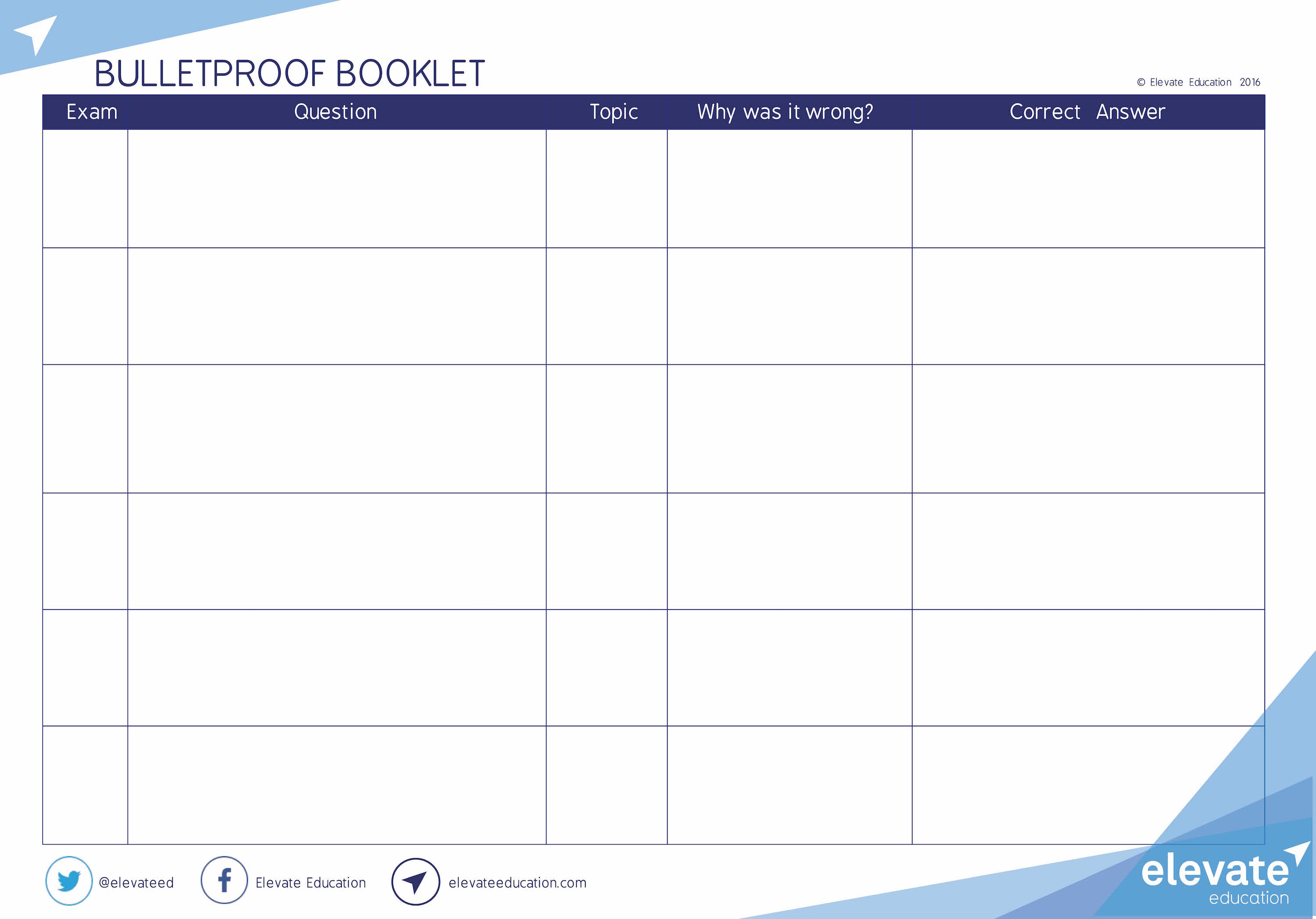The Bulletproof Booklet
Getting ready for exams is not easy. There's literally an unlimited amount of revision to do, and so many different tasks and subjects pulling us in different directions. So how do we know we're ready for exams? At what point can you confidently say, "come at me, exam" (you should never say that aloud)?
One of the biggest traps we see students fall into is that they study for the subjects or topics they're most confident with, therefore avoiding their weakest areas. This means that they never actually develop their weaknesses into strengths, which often backfires when it comes to exams.
Top students, on the other hand, prioritise their weakest areas so that they truly prepare for exams. One of the best ways to do this, is to use the Elevate Bulletproof Booklet. So how does it work? It involves 3 simple steps.
Step 1: Do past exams or revision questions
You'll never really know where your blind spots are unless you test for them. So the first step is to do a past exam - regardless of whether you feel 'ready' to do so. For example, if you're studying for Biology, you might say, "okay, I'm going to do the 2014 Biology exam", or "I'm going to do some revision questions from the elevate website."
Step 2: Get the exam/questions marked
There are 3 ways to do this. Firstly, you can submit it to you teacher. Or you can, mark it yourself using examiner's reports (which you can download from your state authority's website). Finally, you could give it to a friend to mark for you (your friends are always your harshest critics, which is good for this exercise).
Step 3: Fill in your Bulletproof Booklet
This is the good part. Your Bulletproof Booklet is essentially a catalogue or database of all your wrong answers. Other than being a confidence killer, it's supremely useful because it allows you to track patterns in the areas you lost marks. There are a few steps to filling out the booklet.
In the first column, you write in the source of the exam or question - where did you find that question? Then, if you got a question wrong, you fill it in the second column - write the question out in full. Then you write in the topic of your course that it relates to (e,g. 'Meiosis' for Biology). Then you write in the 4th column, why you got it wrong. You might need to speak to your teacher about this ot get feedback, or it may be obvious to you. Either way, write down the reason you got it wrong. Did you misread the question? Did you not have an appropriate definition of a key term? Did you not provide an adequate explanation? Whatever it is, write it down. Finally, in the last column, write in the correct answer as provided by your teacher or the examiner's report.
Then what? Repeat the process!
Once you've filled out the Bulletproof Booklet, you're then ready to complete another set of revision questions. You can repeat this cycle many times, until you no longer get answers wrong. When you're at the stage that you can't fill in the booklet because you get all the asnwers right, guess what? You're exam bulletproof.
By collating all your wrong answers, and the corresponding correct answers and explanations, you essentially get a set of notes that is dedicated to your weaknesses. As you complete multiple revision questions and exam papers, you will notice certain topics or areas that keep coming up in your Bulletproof Booklet. If this happens, it's a perfect sign that THIS IS YOUR WEAKNESS AREA - GO AND STUDY IT!
Rather than scanning over your textbook all day, spend your time on practice questions and then diagnosing and overcoming your weaknesses. By the time you've filled out a few bulletproof booklets, you will notice that you no longer get answers wrong on your practice exams. That's when you know you're ready for exams.
Good luck!
 -
-








 Video
Video Blog
Blog Books + Planners
Books + Planners  Exam Questions
Exam Questions FAQ
FAQ
